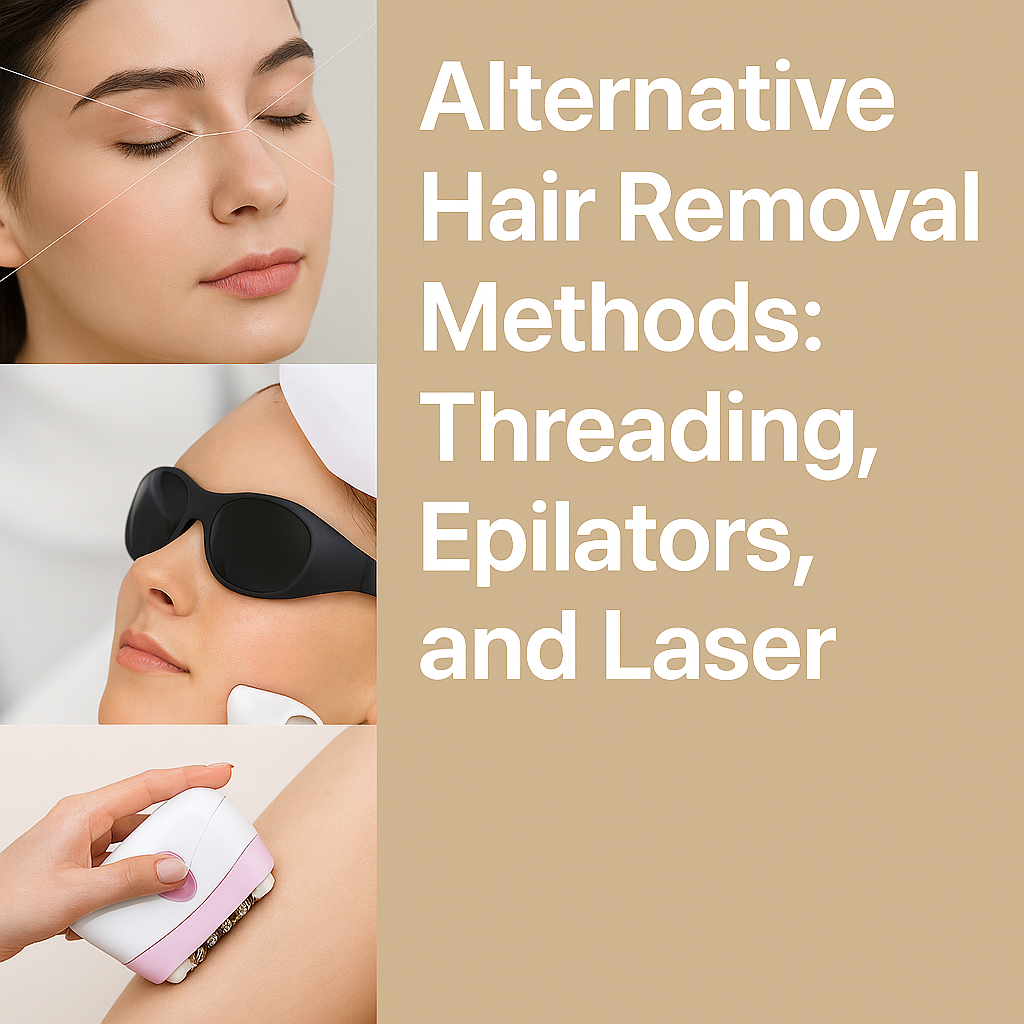Unhappy with the razor’s daily grind or waxing woes? Exploring alternative hair removal techniques can save time, reduce irritation, and deliver longer-lasting smoothness. In this comprehensive guide, we’ll dive into threading, epilators, and laser hair removal—breaking down how each method works, who it’s best for, and expert tips to maximize comfort and results.
Why Explore Alternative Hair Removal
Many traditional methods—shaving, waxing, plucking—come with drawbacks: razor burn, ingrown hairs, skin sensitivity, or frequent salon visits. Alternative approaches often target hair at the root, offer more precise shaping, or even deliver permanent reduction. Choosing the right technique hinges on your pain threshold, budget, skin type, and the areas you want to treat.
Threading: Precision with a Cotton Thread
Threading uses a twisted loop of cotton thread to trap and pull hairs out from the follicle, one line at a time. Historically rooted in India and the Middle East, threading excels at creating clean, defined arches and removing fine facial hair.
- How it works: Technician anchors the thread—often held taut in a figure-eight—then glides it over skin to grip and extract hairs.
- Ideal areas: Eyebrows, upper lip, chin, and sideburns.
- Pros:
- Ultra-precise shaping
- No chemicals or heat
- Slower regrowth than shaving
- Cons:
- Can be painful (though sessions are quick)
- Limited to small areas
- Dependent on technician skill
Epilators: At-Home Long-Lasting Smoothness
Epilators are handheld electrical devices equipped with dozens of tiny rotating tweezers that catch and pull hairs from the root. They work much like multiple tweezers rapidly plucking hair as you glide the device over skin.
- How it works: Place the device flat against skin, switch on, and move in circular or straight motions; tweezers engage hairs and extract them.
- Ideal areas: Legs, arms, underarms, bikini line.
- Pros:
- At-home convenience
- Results last 2–4 weeks
- No ongoing product purchases (beyond occasional replacement heads)
- Cons:
- Noticeable initial pain, which diminishes over time
- May cause red bumps or ingrown hairs if not exfoliated beforehand
- Not recommended for very short hairs
Laser Hair Removal: Precision and Permanent Reduction
Laser hair removal targets melanin in hair follicles with focused light beams, heating and disabling growth at the root. Over multiple sessions, it can dramatically reduce hair density and deliver near-permanent results on dark hair and lighter skin tones.
- How it works: A laser device emits a specific wavelength that is absorbed by hair pigment, converting to heat that destroys the follicle’s growth center.
- Ideal areas: Face, bikini, underarms, legs, arms, and back.
- Pros:
- Long-term hair reduction
- Fast treatments for large areas
- Minimal regrowth after a full course
- Cons:
- Higher upfront cost and multiple sessions required
- Best suited for darker hair on lighter skin (though newer lasers accommodate more skin tones)
- Sun exposure must be minimized before and after treatment
Side-by-Side Comparison
| Method | How It Works | Pros | Cons | Typical Duration | Pain Level |
|---|---|---|---|---|---|
| Threading | Twisted cotton thread pulls hair from root | Ultra-precise; chemical-free | Painful; limited to facial hair | 2–4 weeks | Medium–High |
| Epilators | Rotating tweezers grab and extract hairs | At-home; long-lasting; no recurring products | Initial discomfort; potential ingrowns | 2–4 weeks | High (decreases) |
| Laser Hair Removal | Laser beam heats and disables hair follicles | Permanent reduction; fast for large areas | Expensive; requires sessions; sun caution | Permanent reduction | Low–Medium |
Expert Tips for Maximum Comfort & Results
- Patch Test and Prep
Perform a small-area test before first treatments. Exfoliate gently two days prior to prevent ingrowns (for epilators) and cleanse thoroughly for threading. - Numb if Needed
Over-the-counter numbing creams can soften the pain of epilators or laser sessions—apply 30–45 minutes beforehand. - Consistent Scheduling
Stick to recommended intervals: threading every 3–6 weeks, epilator use every 2–4 weeks, and laser sessions 4–8 weeks apart. - Post-Care Routine
Soothe skin with fragrance-free, hydrating lotions. Avoid direct sun exposure and apply a mineral SPF after laser or epilator treatments. - Professional vs DIY
Threading and laser are best handled by licensed experts. Epilators work well at home, but ensure you choose a quality device with a gentle setting.
By understanding how threading, epilators, and laser treatments each work—and matching them to your skin type, budget, and pain tolerance—you can confidently choose the method that delivers smooth, lasting results. Keep your routine consistent, prioritize professional guidance where needed, and your next touch-up will be pain-free and effective.
